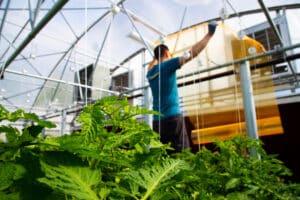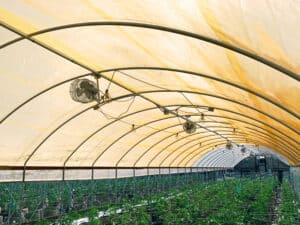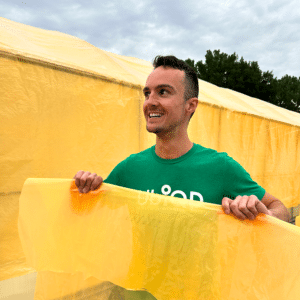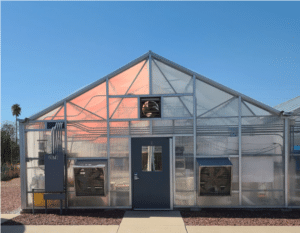
6 Types of Greenhouse Poly Film Coverings
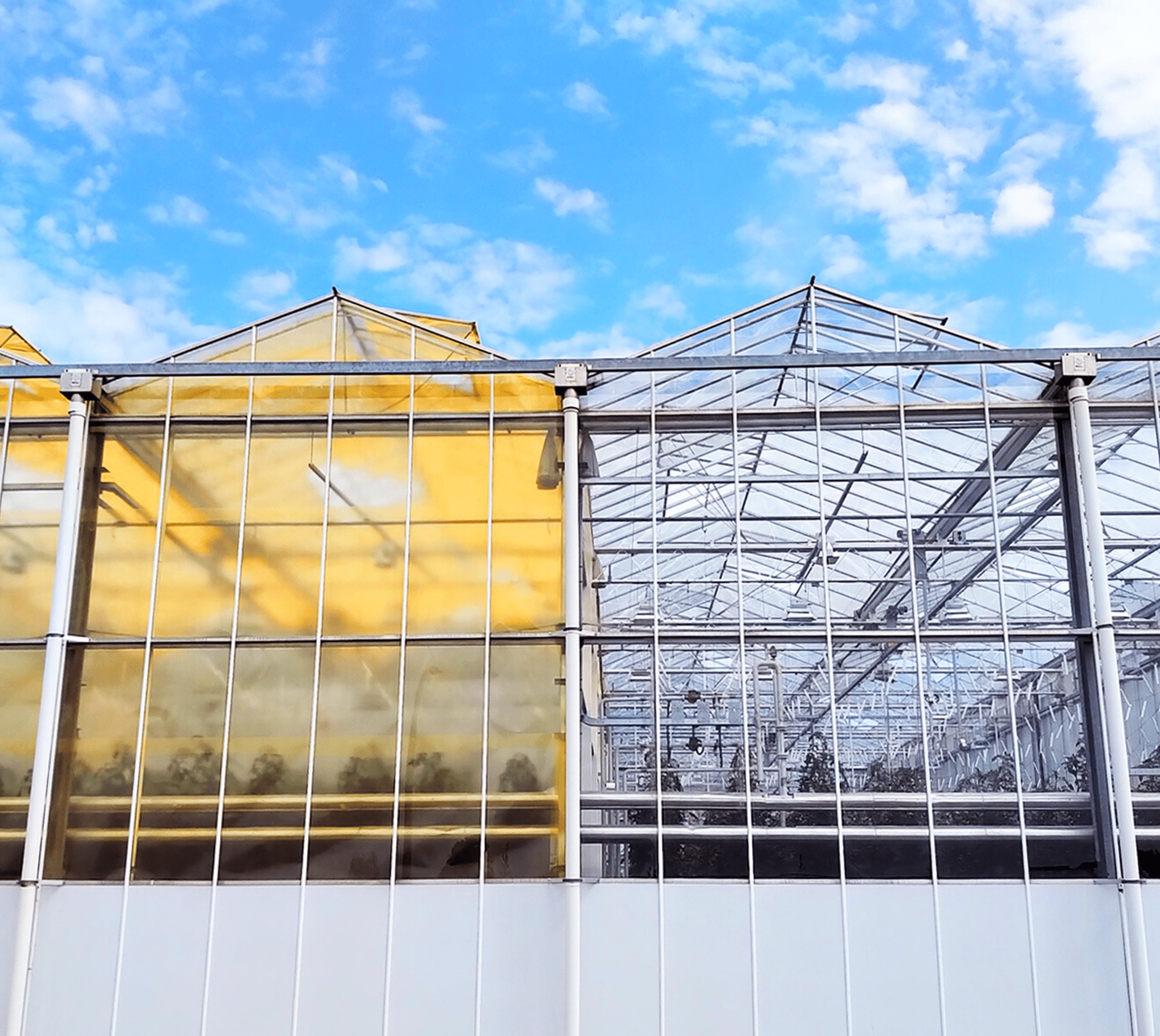
Every grower strives to produce the best crop they can while keeping production costs to a minimum. The covering overhead, including greenhouse poly film coverings and greenhouse plastic covering, is a major component, and when extras are added – anti-condensate, thermal capabilities, or bee compatibility – grower costs start to rise. The product you choose has to fit your crop; polyethylene films offer the plants inside your greenhouse structure extended protection against harmful outdoor elements including wind, rain, snow, and persistent UV rays.
Polyethylene film, a key type of crop protection film, is a simple and cost-efficient solution to give your greenhouse the covering it needs, including greenhouse film covering. Below are some examples of films and what they each offer.
But light distribution, achieved through control of light diffusion, is often overlooked when discussing light quality for plants. Light quality should not only be thought of as light spectrum but also should include light diffusion.
From sunlight to supplemental lighting, let’s take a look at light diffusion and which greenhouse film is best suited for your unique cultivation requirements.
What is Light Diffusion?
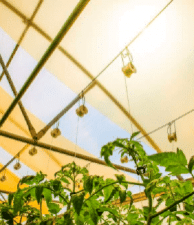
Simply put, light diffusion is the scattering of light. It is photons bouncing around in all directions. In its most simple form, think about standing under a large outdoor shelter when the sun is highest in the sky.
If there was no diffusion of light at all, it would be very bright outside the shelter but totally dark under the shade of it. The reason we can still see well in the shade is the natural diffusion of sunlight by our atmosphere.
Light quality is crucial in horticulture because it inhibits photosynthesis at all levels of the plant. Optimizing light quality is one of the ways you can control the plant photosynthesis process, and greenhouse covers, greenhouse plastic covering, and greenhouse poly film are some of the tools to help accomplish this.
Types of Greenhouse Film
4 Year Film, Clear or White
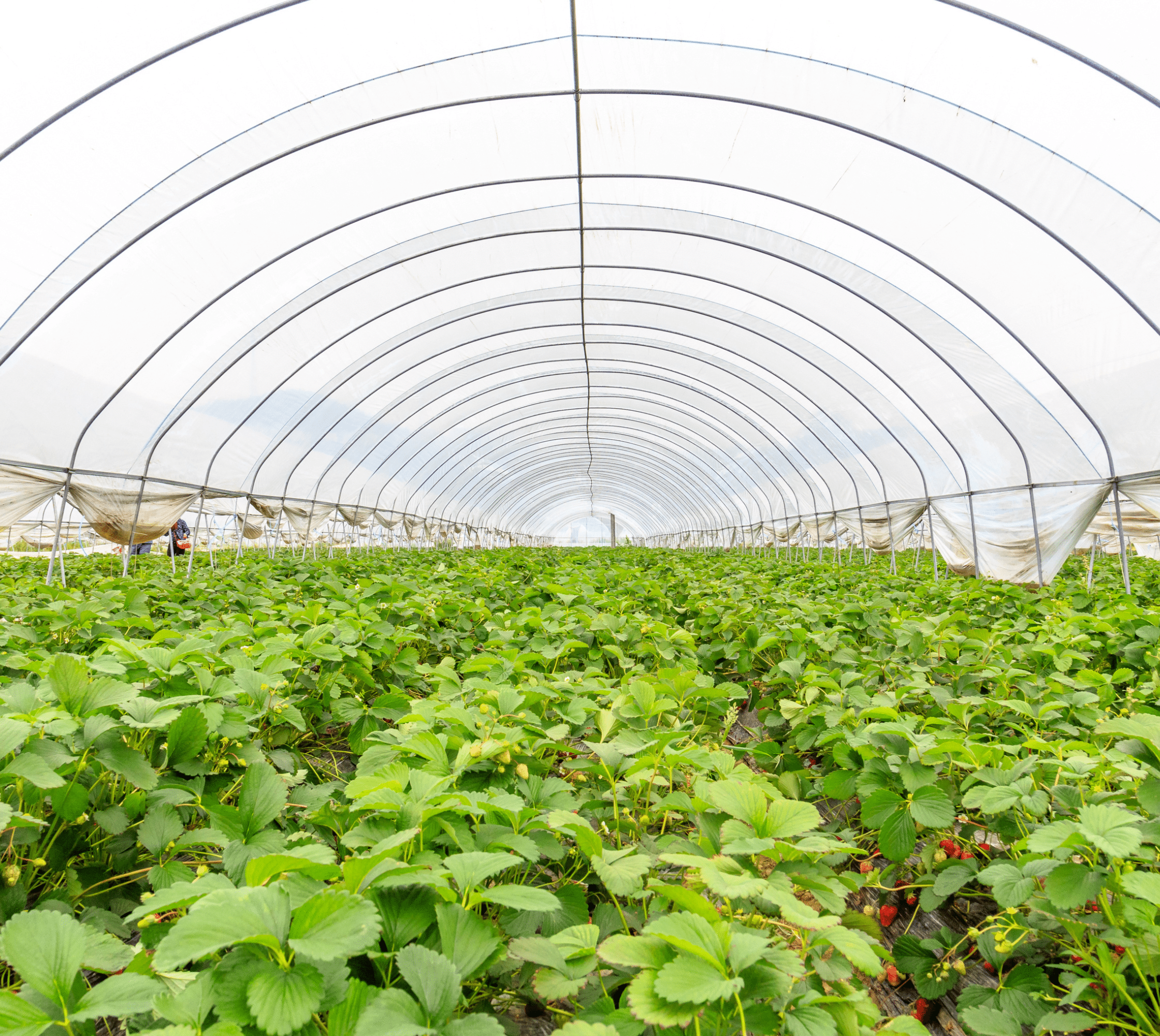
Depending on your crop or climate conditions, most growers choose a double poly system with a blower in between to keep the layers inflated, which will provide an insulation layer for the crop. Either a clear or white film offers you the best protection to suit your growing needs, especially if you are growing in an environment that needs more sunlight. Clear or white greenhouse film can also be effective at light deprivation to reduce heat and reflect UV rays. This type of greenhouse plastic covering enhances light transmission and helps maintain an optimal growing environment.
IRAC- Infrared with Anti-Condensate Control
IRAC Films bring the radiation from the sun into your greenhouse to help with heating, while the anti-condensate control will keep the greenhouse poly film from dripping in the greenhouse when the temperature is cool outside but warm and humid inside on the crop. This type of plastic greenhouse cover is used in many application settings and is optimal for different seasonal climates.
IR/AC film is also a good choice for the inside layer of a double-wall poly greenhouse because of the features and benefits like excellent light transmission, up to 20 percent energy savings due to heat control, providing up to 60 percent diffusion, and offering condensation control with greenhouse coverings.
Diffusion/ Cooling Films
Multiple companies offer a highly diffused greenhouse poly film that improves growing conditions by using controlled diffusion to influence the light reaching the plant. It is designed to make more light available to plants by increasing the amount of diffused light. The reduction of short-wave infra-red radiation enhances the useful light within the PAR light spectrum.
The diffusion of light spectrum from the sun makes these photons reach deeper into the plant canopy. This four-year, 6 mil film is the ideal choice as an outside layer and the perfect partner when combined with an IRAC film as the interior layer of a double-wall poly greenhouse. This leads to healthy, bushy plants while reducing greenhouse cover temperatures.
Woven Poly Film
These films can be used as a single layer or in a double-wall poly system and feature UV stabilization. Woven films have amazing puncture and tear resistance to hold up in tough environments. Woven poly films come in IR, Anti-Drip, and can have excellent UV block and enhanced light diffusion. This greenhouse poly film is a reliable greenhouse cover option, offering durability and flexibility for various growing conditions.
This type of greenhouse plastic covering is also effective to cover expensive equipment, dirt, and temporary enclosures. While this film can be a viable option for many greenhouse growers, it does lack crop-boosting properties that help increase harvest yields.
UV Open Films
This product has undergone IR treatment, which helps it preserve more of the sun’s infrared radiation and disperse it at night. It features a clear, open design, allowing it to transmit about 90% of natural light from the 300 to 400 nm spectrum. It’s also a durable polyethylene material, often used in greenhouse plastic covering and greenhouse poly film applications.
The wonders of this polyethylene film cover don’t end there. Its light diffusion rate stands at a noteworthy 75%. The more it diffuses light, the less apparent shadows become, allowing heat and light to cover the entire growing space more consistently and deeper into the plant canopy. These films can have anti-condensate properties added too, meaning they will prevent fog and droplets from forming in their inner layer. This makes them an ideal greenhouse cover solution for growers looking to maximize light efficiency and crop health.
Luminescent Greenhouse Film
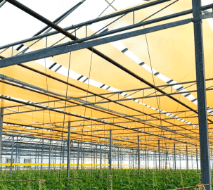
What is a luminescent film? Quantum dots in greenhouse covering materials convert a portion of the sun’s UV and blue light into more potent orange and red light. Orange and red light is more efficiently converted into plant energy by chlorophyll versus green, blue, or UV, which increases light quality and optimizes photosynthesis.
The UbiGro greenhouse film, a type of greenhouse plastic covering, optimizes your sunlight with red-shifting quantum dots that are efficient in manipulating colors of light. Crops take advantage of enhanced photosynthetic efficiency from a red-shifted spectrum to produce more energy that plants use for fruit and flower production. This ultimately leads to improved crop yields and additional revenue in your greenhouse.
In Conclusion
Greenhouse poly film, plastic greenhouse cover, and greenhouse coverings such as greenhouse plastic covering, greenhouse film covering, and crop protection film are among the popular examples of the many coverings available to growers for optimizing their greenhouse environments. These solutions offer vital benefits such as temperature control, light diffusion, and protection against pests and adverse weather, ensuring the healthy growth of crops.
As always, it’s advisable to consult with your greenhouse manufacturer or the supplier from whom you are purchasing your greenhouse supplies. They can provide expert advice to help you select the right fit for your specific growing conditions and crops, ensuring that you make the most out of these innovative agricultural technologies.
For more information about the capabilities of the UbiGro film or questions about this post, reach out to Jim Gideon directly at [email protected].

Jim Gideon
Jim Gideon is an UbiGro Sales Manager, with over 25 years of greenhouse industry sales experience covering all of North America. Previously Jim has worked for Green Tek, Plazit-Polygal, Texel, Cherry Creek, and Nexus. He is based in Montgomery, AL, and Jim believes that “light is everything to the grower.”
Share:
Connect With Us
Company
Resources
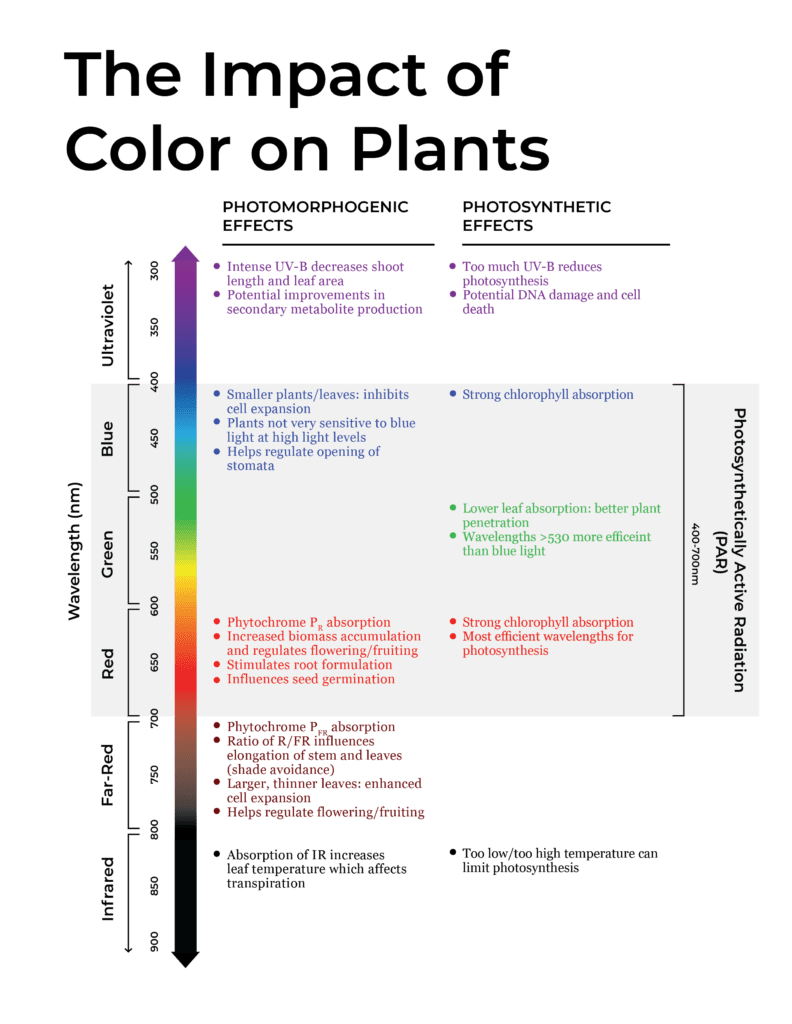

Hunter McDaniel, PhD
Founder & CEO
Hunter earned a Ph.D. in Materials Science and Engineering at the University of Illinois at Urbana-Champaign, before joining Los Alamos National Laboratory in the Chemistry Division. Ultimately the value proposition of UbiGro is about boosting crop yields and quality without the cost or energy impact of lighting. Hunter has more than fifty publications and patents, and more than 2000 total citations, h-index: 20. Hunter fundamentally believes that novel materials underpin every significant technology advancement, and he is focused on leveraging new materials to have a lasting and sustainable impact.

Damon Hebert, PhD
Director of Agriculture
Damon brings a wide range of experience in agriculture, materials science, spectroscopy, and small business. During his time in Prof. Angus Rockett’s research group at The University of Illinois at Urbana-Champaign (UIUC), Hebert authored a doctoral thesis and multiple papers on the materials science of CIGS semiconductor materials, which is closely related to the materials developed at UbiQD. He also served as a consultant to Nanosolar, a CIGS nanocrystal solar cell manufacturing company. Hebert has industry experience having co-founded Dr. Jolly’s, a leading cultivation and distribution operation in Bend, OR.

Tania Lafaille
Sales Representative
Tania is a UbiGro Sales Representative, with over 7 years of experience in product sales (specifically berries and avocados) covering all of North America and parts of South America. While in agriculture, Tania has cultivated strong relationships with growers and distributors, granting her a unique insight into both perspectives. That understanding, paired with her fierce dedication to results, drives her fun and fiery commitment to her craft. Tania is based in Gilroy, CA.

Tyler Veyna
Sales Representative
Tyler brings 15 years of experience in Greenhouse production and facility management of a wide range of crops in multiple states to the UbiGro team. Based in Salinas, California. “Being a fourth-generation farmer, I look to improve and empower the grower, and with UbiGro, we can do just that.”

Jim Gideon
Sales Manager
Jim Gideon is an UbiGro Sales Manager, with over 25 years of greenhouse industry sales experience covering all of North America. Previously Jim has worked for Green Tek, Plazit-Polygal, Texel, Cherry Creek, and Nexus. He is based in Montgomery, AL, and Jim believes that “light is everything to the grower.”

Eric Moody
Director of Sales
Eric Moody is UbiQD’s Director of UbiGro Sales. Eric has more than 6 years of experience in horticulture lighting industry, building relationships with greenhouse growers of all sizes and crops on optimal lighting for their growing operation, and most recently managed a North American sales team for PL Light Systems. Overall, Eric has been in sales leadership positions for more than 13 years. Eric brings with him a great understanding of the market and available technologies for growers, greenhouse facilities, and sales leadership. Reach Eric by phone at 541-490-6421 or by email at [email protected].

Mike Burrows, PhD
Dr. Michael Burrows is UbiQd’s Vice President of Business Development. His educational background includes a Materials Science doctorate from the University of Delaware and an MBA from Duke University Fuqua School of Business. His career has specialized in the commercialization of novel electronic materials in venture-run programs for different industries including solar, biosensors, and the automotive industry. In both start-up and corporate environments, he has extensive experience in global market development, foraging supply chain partnerships, productization, and brand building. He is currently leading UbiQD’s partnership efforts in luminescent greenhouse technology, smart windows, and security ventures.

Matt Bergern, PhD
Cheif Product Officer
As Chief Product Officer at UbiQD, Dr. Matt Bergren leads the company’s product development efforts, sales, and product manufacturing, including the company’s first commercial agriculture product, UbiGro. He plays a critical role in continuing the company’s path of technology development and vision of powering product innovations in agriculture, clean energy, and security.
He serves as the principal investigator for UbiQD’s contract with NASA, focused on tailoring the solar spectrum for enhanced crop production for space missions. Dr. Bergren’s leadership experience includes serving on the board of directors for the New Mexico Energy Manufacturing Institute, focused on job creation in New Mexico’s energy, and related manufacturing community.
